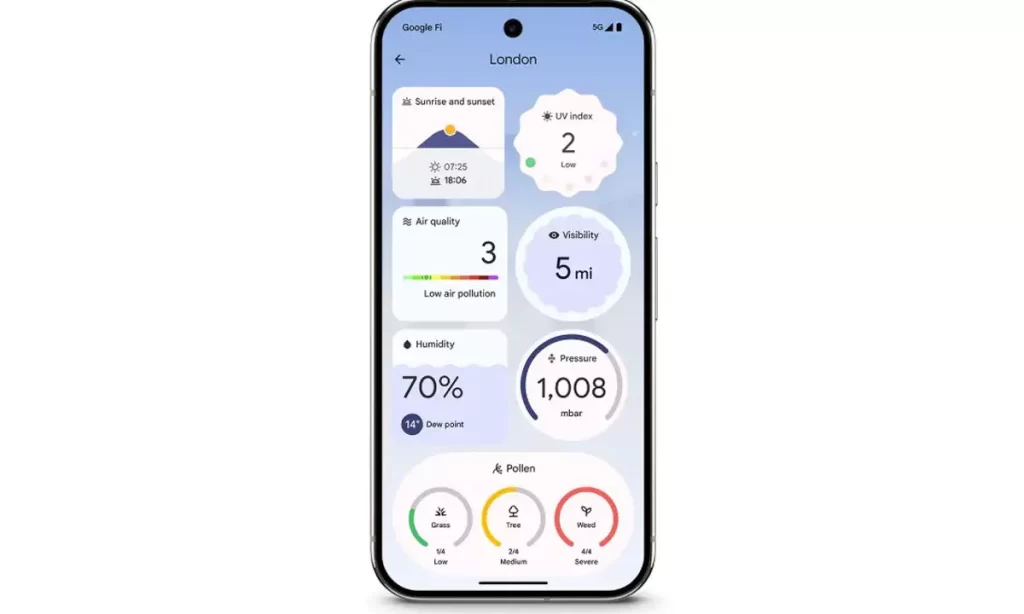On October 31, 2024, Google announced the rollout of its AI-enhanced weather app to older Pixel smartphones, specifically models starting from the Pixel 6 series. Initially introduced with the Pixel 9, this standalone app is designed to deliver comprehensive weather information and is now available for users running Android 15 with the latest system updates.
Overview of Google Weather App Features
The Google Weather app boasts several features that aim to enhance the user experience by providing accurate and easily accessible weather information. Here’s a closer look at its functionalities:
1. Integration with Existing Services
The app pulls saved locations directly from the built-in weather service already available on Pixel devices. This integration allows users to monitor weather conditions in multiple locations without having to input them manually.
2. Customizable Weather Tracking
Users can customize their weather dashboard by arranging data blocks according to their preferences. This feature makes it easy to prioritize the information that matters most to them, whether it’s hourly forecasts, daily summaries, or specific weather alerts.
3. AI-Powered Summaries
One of the standout features of the Google Weather app is its AI-driven summaries, which condense the day’s weather into easy-to-understand information. This capability helps users quickly assess whether they need to carry an umbrella or dress for warmer temperatures.
4. Map View
The app includes a map view for visualizing weather patterns, which can be particularly useful for tracking storms or changes in weather conditions across different regions.
User Experience and Feedback
Despite its promising features, the Google Weather app has received mixed reviews. As of the latest updates, it holds a rating of 2.3 stars on the Play Store. Some of the common complaints from users include:
- Limited City Access: Users have pointed out that you cannot check the weather in cities that are not added to your saved locations. This limitation can be frustrating for those wanting to quickly glance at conditions in unfamiliar places.
- User Interface Issues: Some users have expressed dissatisfaction with the app’s interface, citing that it can be less intuitive than other popular weather applications.
Comparison to Dark Sky
The Google Weather app’s design and functionality draw comparisons to Dark Sky, a once-popular weather app that was known for its precision and user-friendly interface before being acquired and discontinued by Apple in 2020. Many former Dark Sky users have been on the lookout for a comparable alternative, and Google Weather aims to fill that gap.
Conclusion
Google Weather represents a significant addition to the Pixel ecosystem, particularly for users seeking a reliable and feature-rich weather application. As it rolls out to Pixel 6, 7, and 8 series devices, it provides a valuable alternative for those who have struggled to find a suitable replacement for Dark Sky. With the potential for future updates to address user feedback, the app could become a favored tool for managing daily weather needs. As more users gain access, it will be interesting to see how the app evolves and improves based on community feedback.

